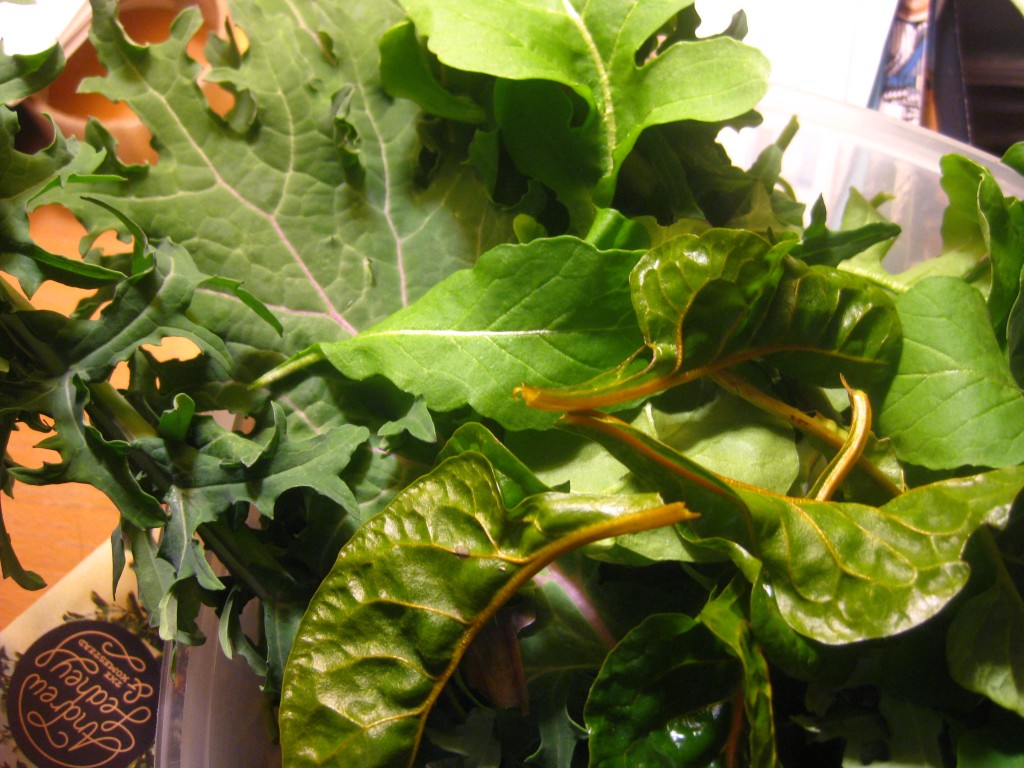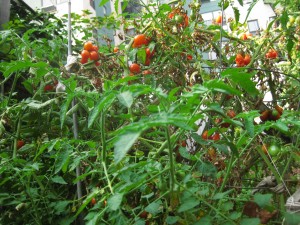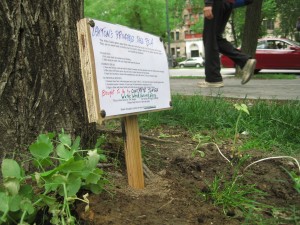 Two Sundays back Shannon and I followed through on an idea I cooked up last winter. We would start seeds indoors, organize a children’s morning in our community garden across the street, and lead a hand’s-on, dirt-on-the-knees lesson in, well, all things Plant.
Two Sundays back Shannon and I followed through on an idea I cooked up last winter. We would start seeds indoors, organize a children’s morning in our community garden across the street, and lead a hand’s-on, dirt-on-the-knees lesson in, well, all things Plant.
So I started some sunflowers inside, staggered the timing so we had one about six inches tall with its new yellow face and five just green, half-inch sprouts with plump leaves. We armed ourselves with about a hundred seeds of sunflowers of various heights and colors, two boxes of crayons, and a big bottle of tangerine orange juice.
We had, as we explained to Garretta, our neighbor and grandmother of our first four participants, an educational program. The explanatory exchange went something like this:
Jason & Shannon: Okay, kids, let’s talk a little about plants for a—
Garretta: You four get on over to that plot and start pulling those weeds!
(Kids shoot from the picnic bench like bees are at their butts.)
Jason & Shannon: Well, first let’s talk about roots. See—
Garretta: Pull those weeds because we aren’t gonna be here all day; we have to go to that park to play in the water.
Jason & Shannon: Damn, Garretta, we have an educational program planned here!
Garretta: Ha-ha-ha-ha….. Continue reading →


 I’ve been meaning to save my own tomato seeds for years. It always felt like one of those things that was not merely a good idea but a full-on AWESOME, supremely Jay kind of thing to do. But, probably for curious reasons that are worth me pondering further in solitude, I never found the time to learn do it. It was proving to be a bit like learning to bend notes on the harmonica.
I’ve been meaning to save my own tomato seeds for years. It always felt like one of those things that was not merely a good idea but a full-on AWESOME, supremely Jay kind of thing to do. But, probably for curious reasons that are worth me pondering further in solitude, I never found the time to learn do it. It was proving to be a bit like learning to bend notes on the harmonica.





 Sure, we love writing for the blog, but it’s not just about us, us, us. One of the reasons we started PitchKnives is so we could hear your stories about food and gardening. So in our second month, it’s time to make your voice heard. All you need to do is write to us at submissions@pitchknives.com
Sure, we love writing for the blog, but it’s not just about us, us, us. One of the reasons we started PitchKnives is so we could hear your stories about food and gardening. So in our second month, it’s time to make your voice heard. All you need to do is write to us at submissions@pitchknives.com